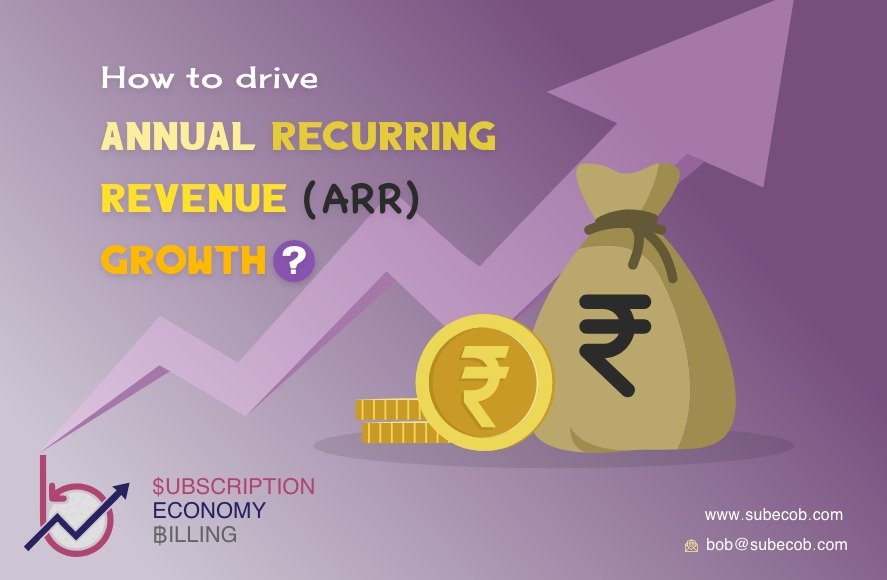
You have a great product, and even a convincing number of paying customers who keep your business running annually, but your ARR is not growing!
You wonder what is wrong?
A competitor who started with you is growing by leaps and bounds, but your revenue is struck at a threshold, not moving by an inch.
Well, situations like this are common for SaaS-based businesses. Just when you think it’s a dead end, here’s good news – You can break the revenue barriers and grow your ARR to new heights, applying some common sense and timely strategies.
What are they? Let’s take a look!
Learn how to grow annual recurring revenue
Content of the article
- What is annual recurring revenue?
- ARR Vs. MRR
- How to calculate ARR?
- Benefits of calculating ARR
- How to drive ARR growth?
- Infographic – What is ARR and how to drive ARR revenue growth
- Conclusion
- FAQ
What is annual recurring revenue?
ARR is short for annual recurring revenue.
It’s a SaaS metric that’s used to measure the yearly recurring revenue from your customer’s recurring subscriptions.
Simply put, ARR helps measure how much revenue you can expect from customer subscription in a calendar year.
ARR is closely connected to MRR – which means monthly recurring revenue, although they share the duration differences.
ARR vs. MRR
Monthly recurring revenue is the total sum of income that you can expect to generate every month, whereas; ARR as noted above is about measuring the data yearly. So, there is the duration difference.
How to calculate annual recurring revenue?
Calculating ARR involves measuring several minute details, and the result can vary depending on factors such as your present pricing strategy, the nature and type and complexity of your product/service and business model. As your business scales, new factors may need to be introduced in the calculation.
Generally speaking, the ARR formula is this –
Annual Recurring Revenue (ARR) = (Total $ subscription cost Per Year + Recurring revenue from expansion, add-ons and/or upgrades) – Total $ revenue lost from cancellation of subscriptions.
Benefits of calculating annual recurring revenue (ARR) for SaaS business
Analyzing monthly recurring revenue provides a clear idea about monthly progress, but ARR gives you annualized data which sounds more sustainable and practical.
- It helps you see the impact of decisions on a year-on-year basis.
- It shows how well your business revenue compounds over time.
- It allows you to make realistic predictions about your future revenue.
In other words, it allows businesses to understand the health of their subscription plan in a more realistic and genuine way. Every minute details, including customer churn rate, acquisition goals, impact of changes made in features and announcements can be mapped to a greater goal: Making better product that yields more revenue in future.
How to drive annual recurring revenue growth?
Here are some ways that may help in case you are struggling with generating enough revenue. Also note that every business is unique, and so are the chances of growth, therefore these solutions may not work in all cases and you need to adjust your subscription strategies based on your product, customer behavior, data and competition etc.
Revise price
If a product is under-priced, revising the price to a moderate level may drive growth in revenue. Of-course, how customers behave with the change and development need to be carefully inspected so that existing customers are not lost.
Split the features
Having all the features in one product is good, but most customers would not need all of them. You can split some of the features and sell them separately as add-ons and upgrades. Some customers would never need them, while some would be happy to pay some extra for the value provided. But splitting features should not make the product/service weak, otherwise it may earn negative consequences.
Revise unlimited offerings
Your product is not finished at one go. It revises and improves and with that, the features. As you add more features, your cost increases, similarly a customer probably needs to pay for the upgrades, rather than sticking to a fixed subscription. However, revising unlimited offerings needs careful research and calculating the risks beforehand is essential. Because some customers may have become habituated to the subscription and features, they may not want to accept changes.
Likewise, up-selling, retaining existing customers, convincing them to refer your product to others etc may help drive ARR growth.

FAQs
- What is ARR?
ARR is short for annual recurring revenue. It’s a SaaS metric that’s used to measure the yearly recurring revenue from your customer’s recurring subscriptions.
- Which is important – ARR or MRR?
Both are essential. One provides monthly estimates; whereas the other gives yearly calculation
- How to calculate ARR
Annual Recurring Revenue (ARR) = (Total $ subscription cost Per Year + Recurring revenue from expansion, add-ons and/or upgrades) – Total $ revenue lost from cancellation of subscriptions.
Conclusion
SaaS companies should invest in a reliable monetization platform to reduce subscription churn rate and improve the value of their product and customer retention. SUBECOB is a cloud-based monetization platform to simplify subscription business, Quote to order, Up-sell, Down-sell, Recurring Bill & revenue, Subscriber Life-cycle management, Analytics & Reporting from one single platform. Learn more here
Leave a Reply